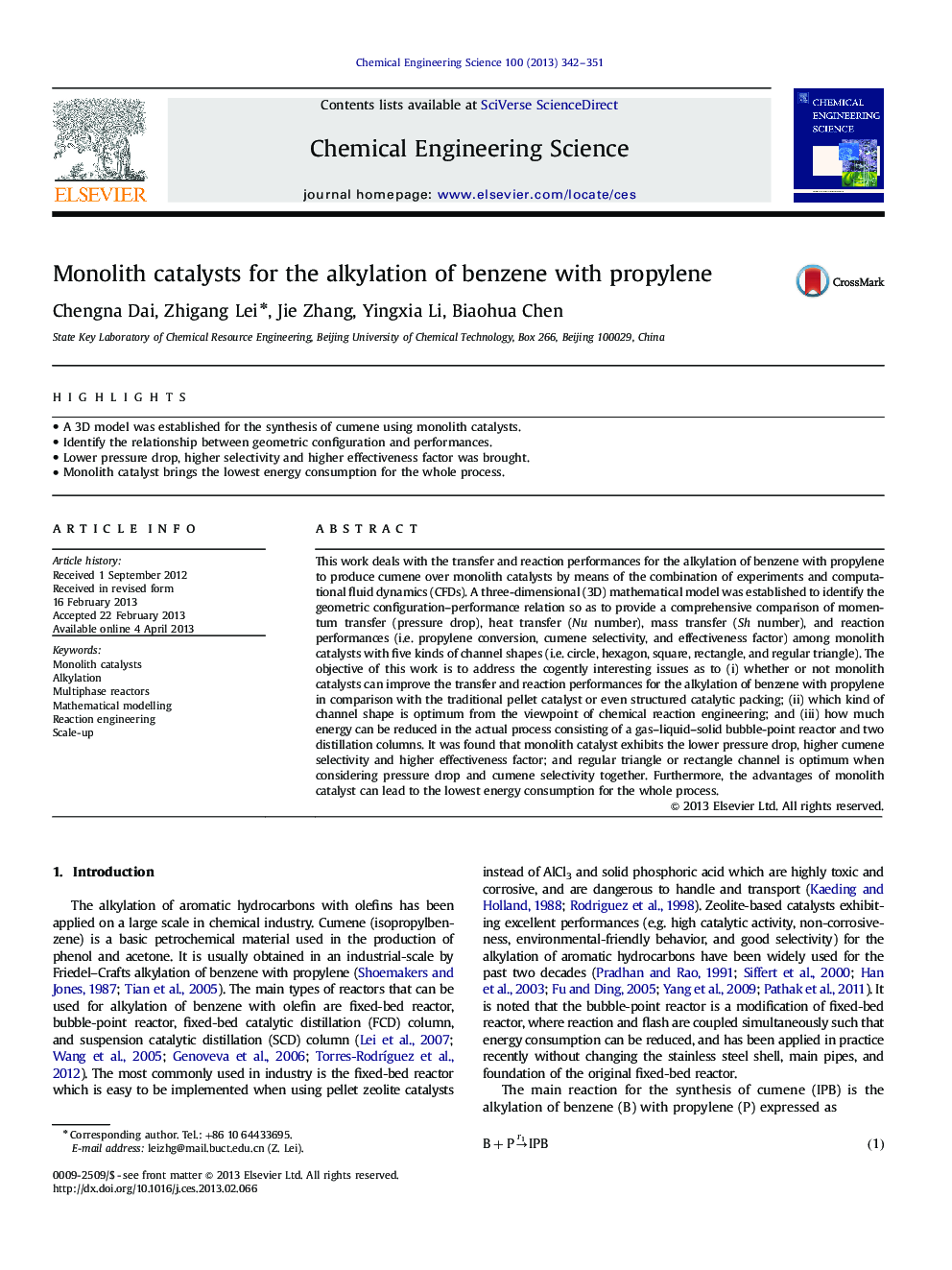| Article ID | Journal | Published Year | Pages | File Type |
|---|---|---|---|---|
| 155079 | Chemical Engineering Science | 2013 | 10 Pages |
•A 3D model was established for the synthesis of cumene using monolith catalysts.•Identify the relationship between geometric configuration and performances.•Lower pressure drop, higher selectivity and higher effectiveness factor was brought.•Monolith catalyst brings the lowest energy consumption for the whole process.
This work deals with the transfer and reaction performances for the alkylation of benzene with propylene to produce cumene over monolith catalysts by means of the combination of experiments and computational fluid dynamics (CFDs). A three-dimensional (3D) mathematical model was established to identify the geometric configuration–performance relation so as to provide a comprehensive comparison of momentum transfer (pressure drop), heat transfer (Nu number), mass transfer (Sh number), and reaction performances (i.e. propylene conversion, cumene selectivity, and effectiveness factor) among monolith catalysts with five kinds of channel shapes (i.e. circle, hexagon, square, rectangle, and regular triangle). The objective of this work is to address the cogently interesting issues as to (i) whether or not monolith catalysts can improve the transfer and reaction performances for the alkylation of benzene with propylene in comparison with the traditional pellet catalyst or even structured catalytic packing; (ii) which kind of channel shape is optimum from the viewpoint of chemical reaction engineering; and (iii) how much energy can be reduced in the actual process consisting of a gas–liquid–solid bubble-point reactor and two distillation columns. It was found that monolith catalyst exhibits the lower pressure drop, higher cumene selectivity and higher effectiveness factor; and regular triangle or rectangle channel is optimum when considering pressure drop and cumene selectivity together. Furthermore, the advantages of monolith catalyst can lead to the lowest energy consumption for the whole process.
